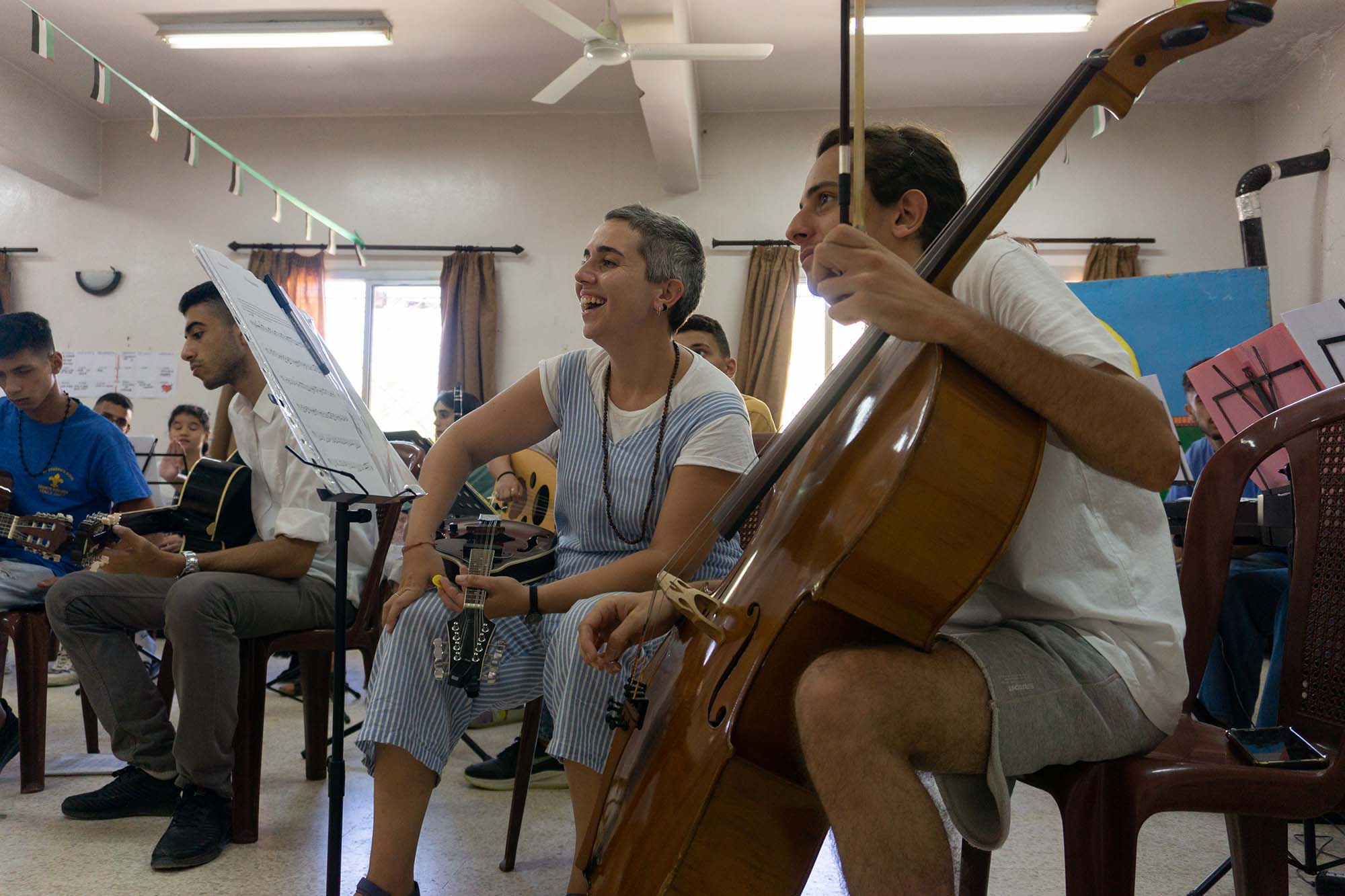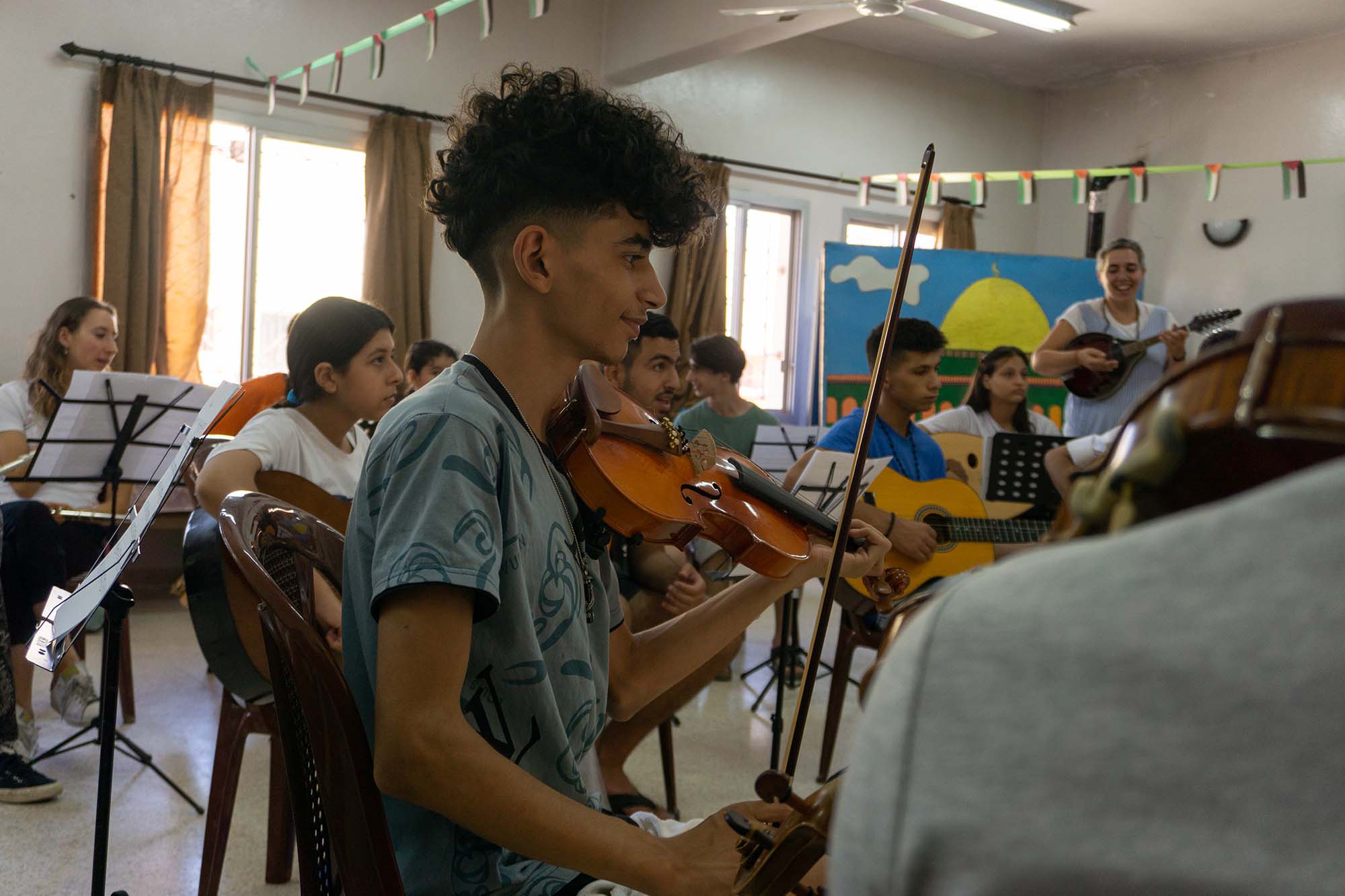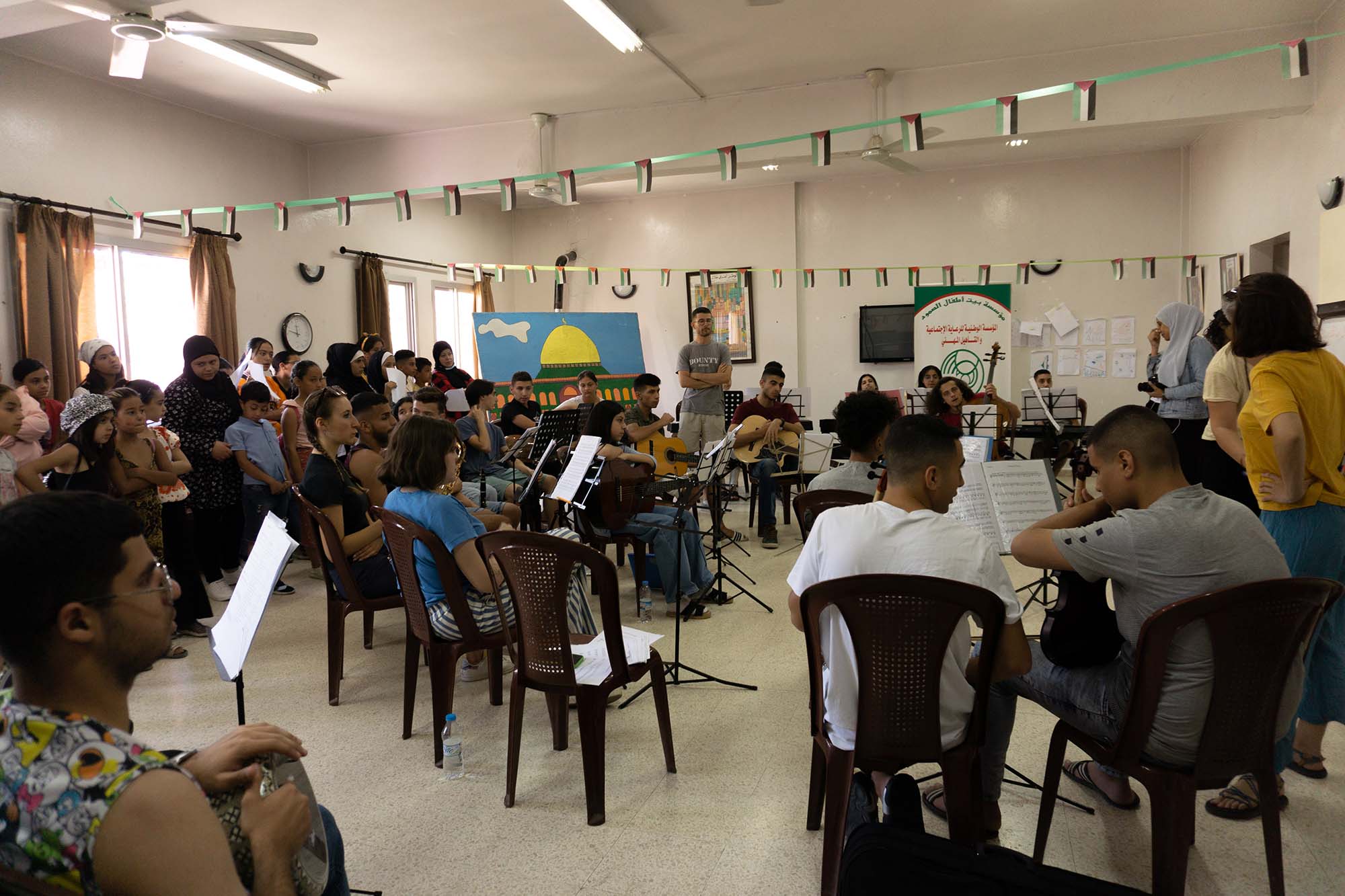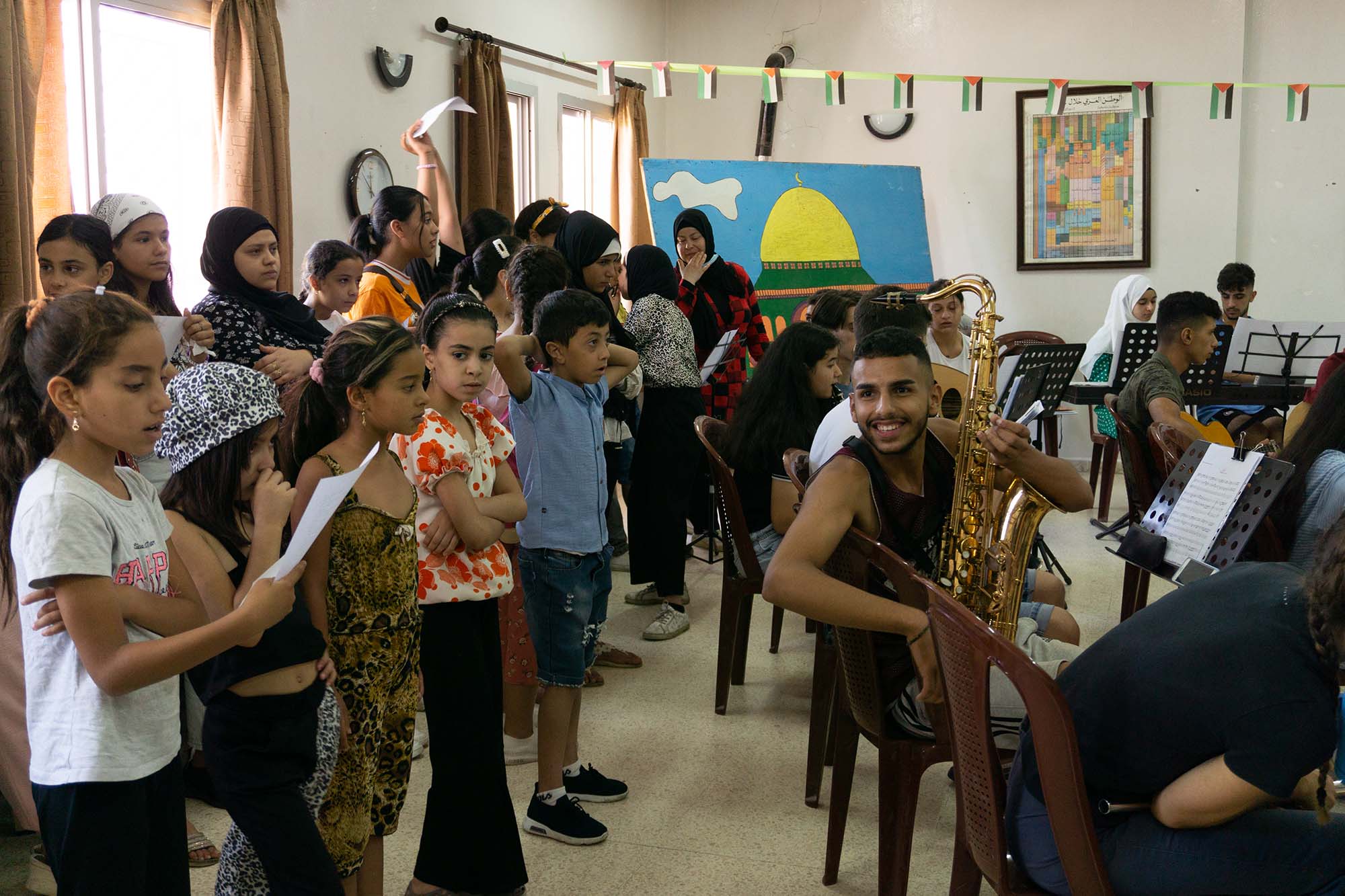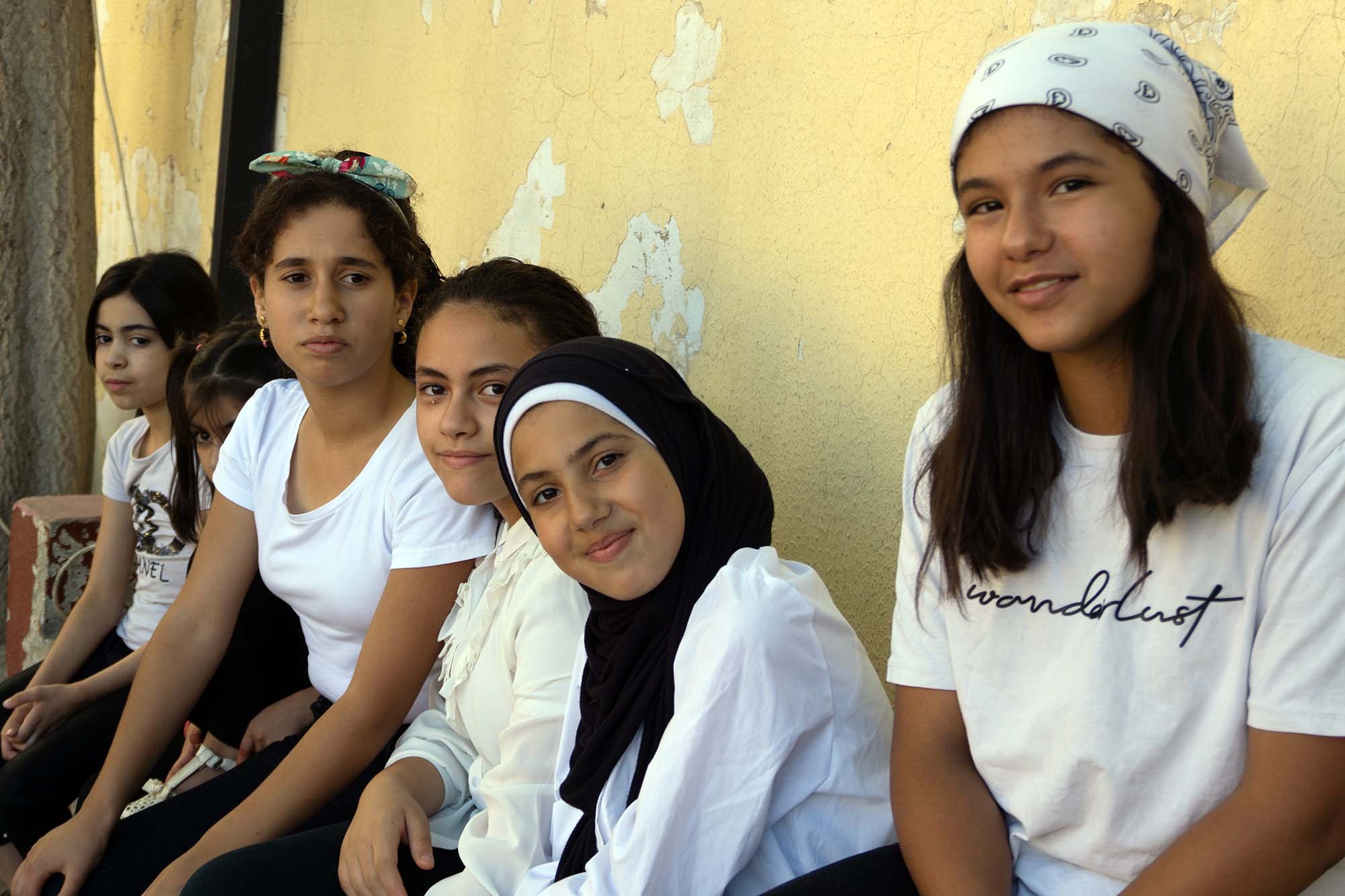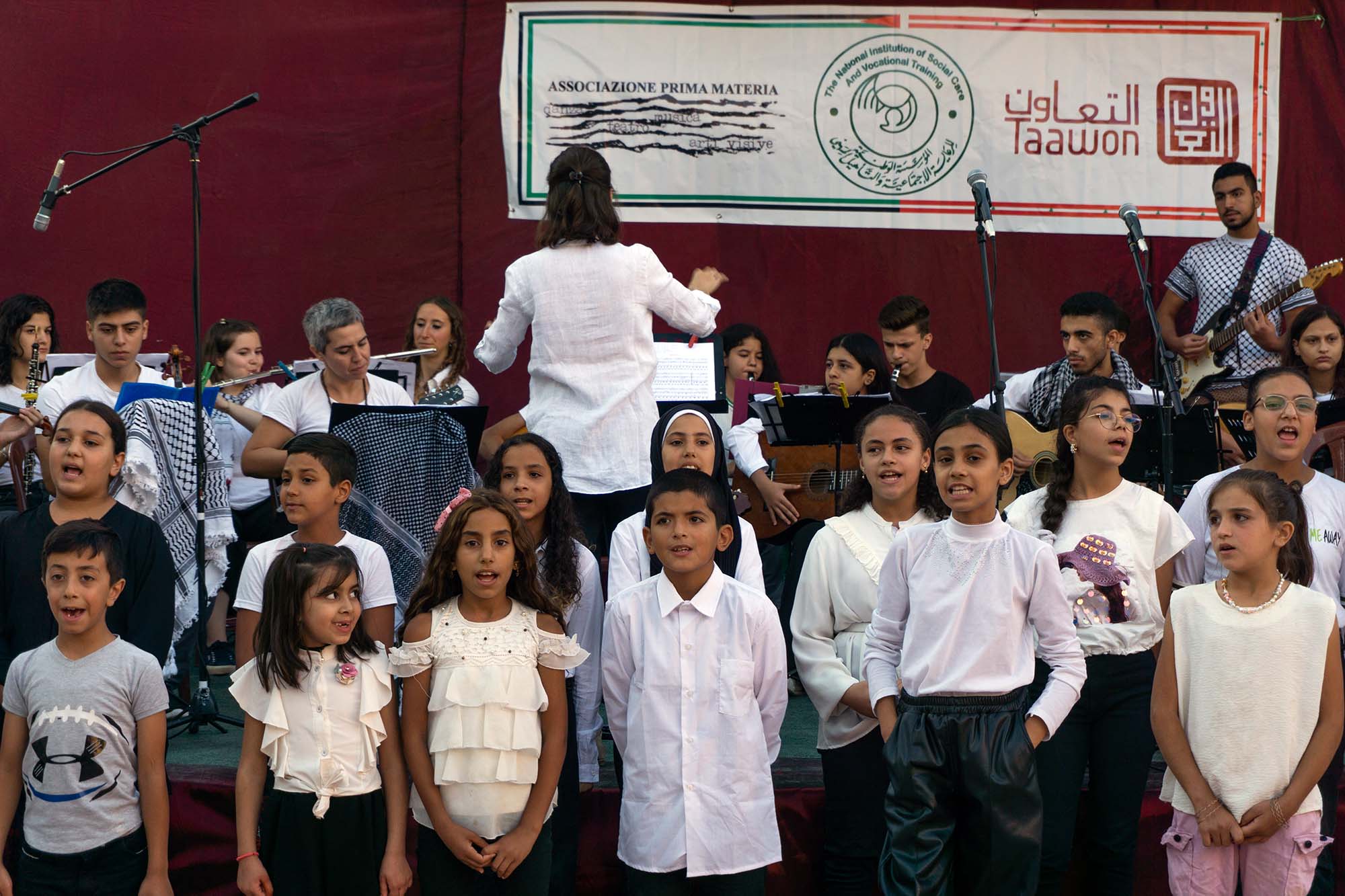Community Music (CM)
Participating in music, be it through singing, playing or listening, is a characteristic of humankind, and there is virtually no society that does not have some kind of collective music-making. Yet in our society, a large proportion of music learning happens on a one-to-one basis, in contradiction to its social nature.
This kind of teaching often focuses on affirmed repertoire and the competence to reproduce it, fuelling a selective system of competitions to define the best, most technically brilliant young musician. All this works against music as a promoter of an inclusive and cooperative society. It is, however, possible to teach music differently.
Life pulsates in us through vibrations, and vibrations are sounds; people are sounds. When this philosophy is put into practice, the starting point for music-making is the creation of a togetherness, exactly as in a society.
A healthy society needs people who fulfil different roles: a clarinettist, a percussionist, a cellist. Music can bring together musicians of diverse capacities; groups can include people who have been learning for only a few months with those of many years’ experience.
CM actions tend towards inclusion, in the sense that no line is drawn between those who are “musical” and those who are not. As Brynjulf Stige writes:
“This change in perspective has implications for the conception of musicality, which no longer could be thought of as a gift for the happy few but rather as a shared capacity of the human species”(1)
This is appreciable in Prima Materia’s local community in Tuscany, where the CM project struggles to guarantee access to music formation and participation to diversely able people, disadvantaged families, immigrants, and asylum seekers. In fact, the pedagogic concept informing CM activity in Lebanon does not differ substantially from Prima Materia’s locally based project in Italy. It stems from “an understanding of music and its role in empowering the person”(2) and from the conviction that music is not just an entertaining pastime, but that it really can promote social change and thus transform quality of life for people.
However, within the context of marginalized communities such as that of the Palestinian refugees in Lebanon, the concept of inclusion demands more attention. For these communities, it is exclusion which defines existence at all levels; exclusion dictated by the hegemony of a hostile “host” state, which condemns the younger generations to grow without self-esteem and with countless difficulties which begin in the home and influence their entire lives.
Despite this, Assumoud, as a non-sectarian and humanitarian organization, offers its services to all disadvantaged people, irrespective of nationality, creed, or political affiliation.
The inclusion factor therefore comprises an unconditional invitation to Palestinian refugee children and their local trainers, to take their rightful place as community musicians beside their European counterparts, exploring, and learning together.
M&R develops CM mainly in two camp locations: Tarablus, in the north of Lebanon, and Sidon, in the south (see Figure). These two camps are very different; Beddawi Camp (Tarablus) is “open,” allowing free access without particular tensions. In Sidon the camp of Ein El Hilweh is permanently controlled by the Lebanese forces and entry permits are extremely difficult to obtain. The M&R team has never been inside until 2021.
Sessions begin with musical games, as in the psycho-social music workshops, using body percussion, voice, and instruments to create rhythms and musical forms. The concept of “making a mistake” is avoided, since it is counter-productive. Ensemble work begins from the community’s cultural heritage, Palestinian and Arabic repertoire, an essential resource for a population uprooted from its historical and social background, and is complemented by Italian and Western repertoire. Suggestions for pieces come from students and teachers alike, and choices are made collectively. The repertoire arranged by M&R staff carefully calibrates instrumental parts to fit the very varied technical levels of the players, so that no one is left out. The project brings students from different camp locations to play together, since the opportunities for interaction with peers from other camp communities are otherwise virtually non-existent. It also focuses on developing teaching skills in older students, who can then teach the younger musicians.
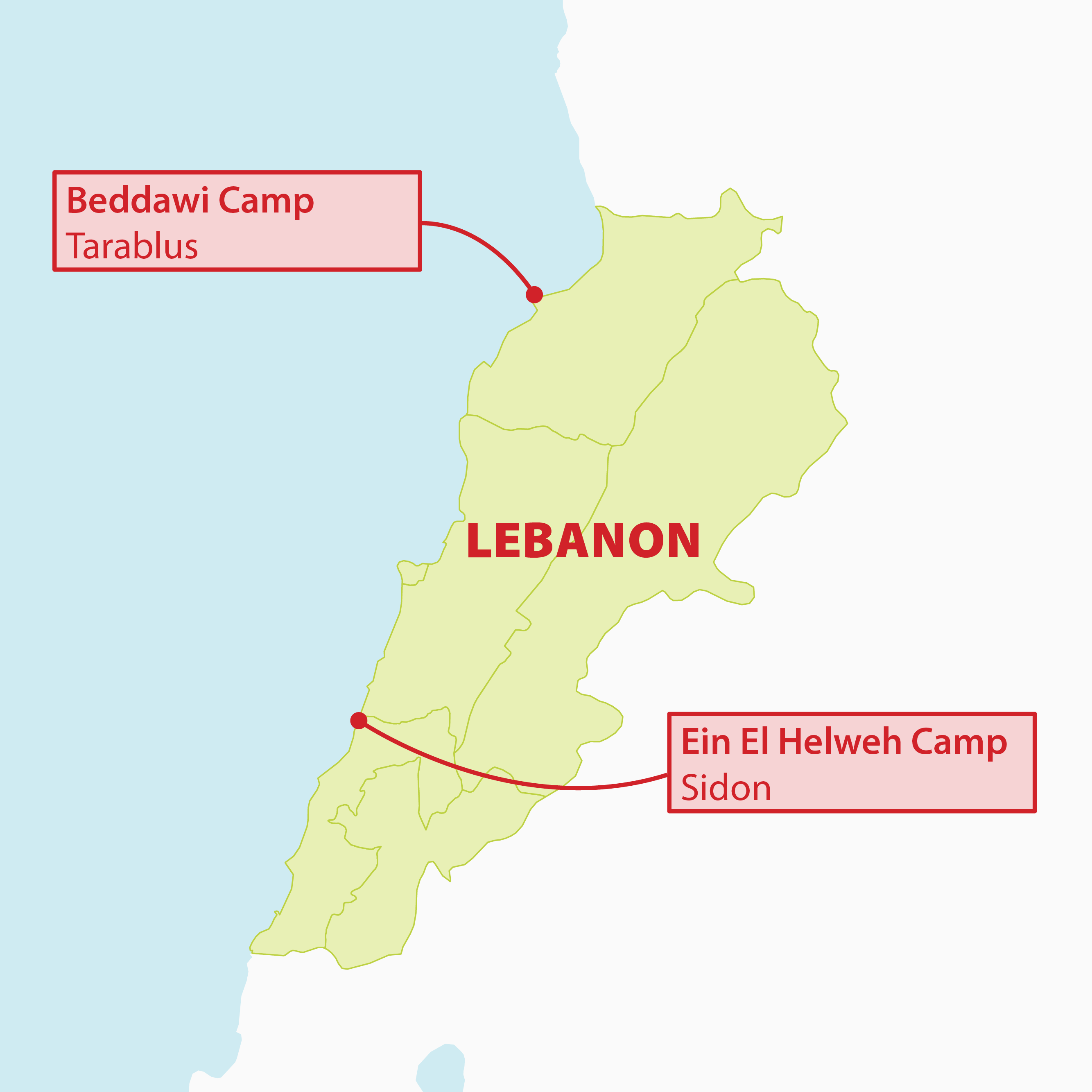
This strategy contributes to the project’s sustainability at a local level, and promotes skills and competences in the Palestinian student teacher trainees, which, in turn, supports their self-esteem and sense of value in the community. For the younger children, there is a great difference between training with an external European musician, and peer-learning with more experienced members of their own community, who become models representing new possibilities of growth and development. Recognizing and nurturing this potential in the teacher trainees fosters a sense of self-sufficiency and agency in the community, in healthy contrast to the status quo of total dependency in which it has been forced to live for over 75 years.
This project action has proved to be highly significant as an educational resource for the protection of teenagers, that grow up in conditions of extreme deprivation. One of these teenagers, from Tarablus, after completing a music therapy treatment, learnt his instrument and teaching competences well enough to become one of the student teachers of the group. He told his story in his own words:
“I was 13, a stubborn and troublesome child. Most of my friends had been detained by the police many times. One day, I hit a boy with a sharp instrument while defending myself. It was then that I was referred to the Beit Atfal Assumoud institution to receive psychological assistance… I was advised to enroll in music therapy classes and after a while, as I was doing well, I moved to normal music classes and started playing the flute… I became less anxious; even the number of epileptic seizures that I suffered dropped. I built new friendships and felt like I belonged to a new family who cared about me.” (4)
Adapted from the article Adjusting the pitch, section 4c (pp. 13-17).
Photos from the CM activities in El Jalil camp, Baalbek, 2023 (photos by Annie Francisca).
Notes
- Stige, in Stige, B., Ansdell, G., Elefant, C., & Pavlicevic, M. (2010, p. 7). Where music helps: Community music therapy in action and reflection. Ashgate. ^
- Ruud, E. (2008). Music in therapy. Increasing possibilities for action. In Music and Arts in Action, 1 (1), pp. 46-60. Available at: https://musicandartsinaction.net/index.php/maia/article/view/musicintherapy. ^
- Higgins, L. (2012). The community within community music. In McPherson, G. E., & Welch, G. F. (Eds.). The Oxford handbook of music education vol. 2. Oxford University Press: pp. 104-19. https://doi.org/10.1093/oxfordhb/9780199928019.001.0001 ^
- Ta’awon Lebanon (2018, p. 32). Towards Constructing a better reality. Annual Report 2018. https://taawon-lebanon.org/uploads/annual_reports/Web_Version_Annual_report_high_res.pdf ^

